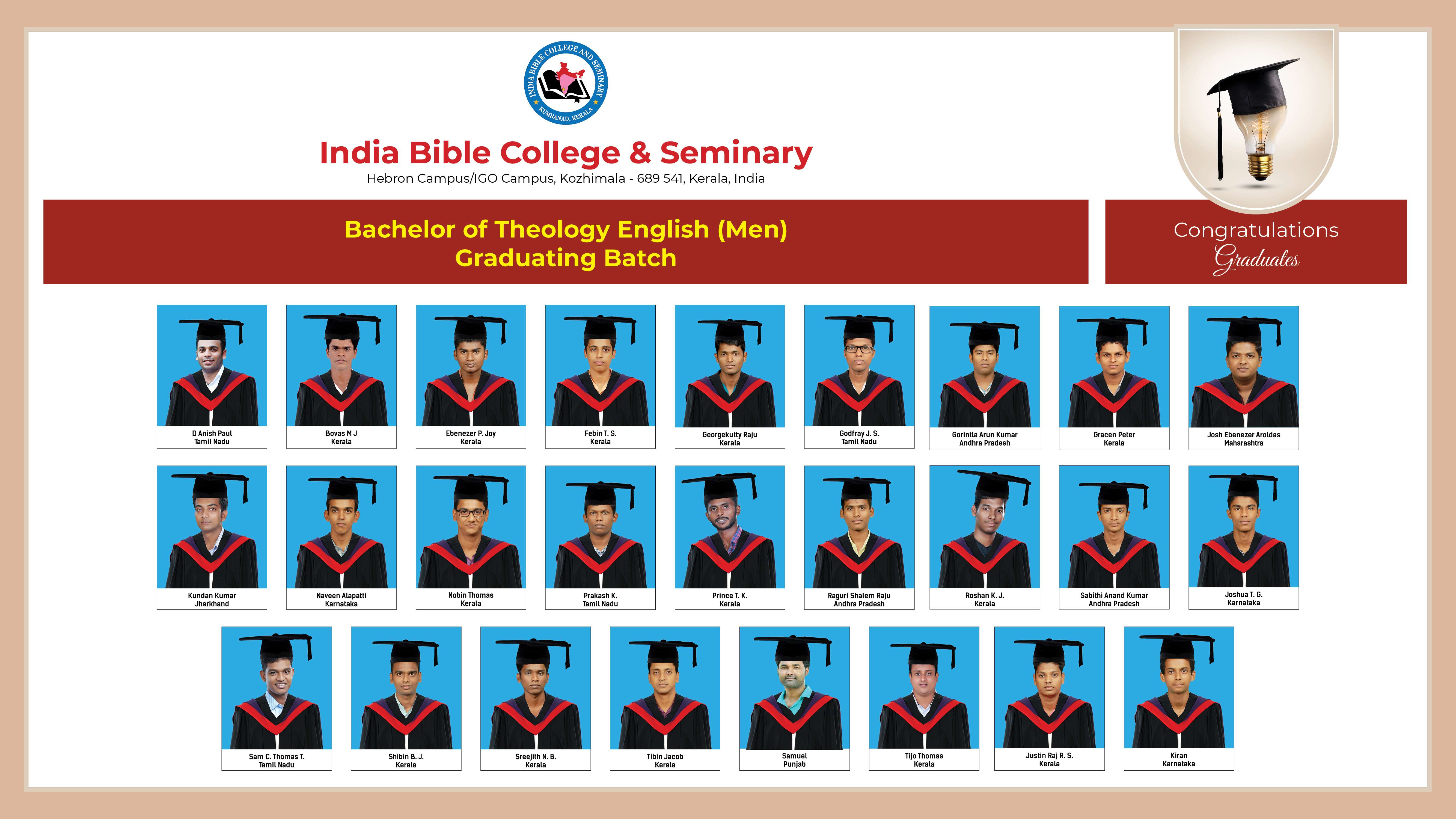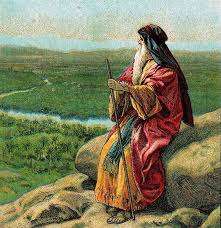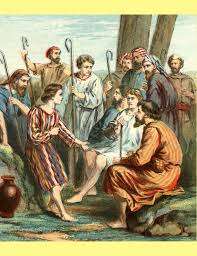

The Meal Offering and its Implications for Spiritual Nourishment
Pr. Phinni Joseph
Sacrifice is at the heart of all true worship. The Levitical sacrifices and offerings were designed to demonstrate the subservience of Israel, to atone for her offenses against her Lord and to reflect the harmonious and peaceableness of the relationship thus established or reestablished.
God designed the offerings to teach the Israelites as well as to enable them to worship Him. They taught the people what was necessary to maintain and restore the believers’ communion with God in view of their sin and defilement. It serves as the consecrating ritual for participation in the holy rites, it forms the appropriate tribute due to the Lord, and it represents the proper spiritual attitude of the worshipper.
Every sacrifice involves three elements: the offerer, the offering and the mediator. Each Levitical sacrifice was different from the other offerings. And also within each offering there were different options of what the offerer could present and how he could offer them. Among the five sacrifices, the first three offerings were “soothing aroma” sacrifices and the last two were not. The first three were a sweet aroma to God because they were made in communion and to celebrate communion with the Lord. It describes the essential requirements for a right relationship between a sinner and a holy God. The last two sacrifices reveal how to restore a broken relationship between a redeemed ‘sinner’ and a holy God.
The Meal Offering
The meal offering, otherwise called grain or cereal offering is an offering of worship. It symbolizes the commitment of one’s person and works to God. A meal offering always followed the official daily burnt offering accompanied with a peace offering.
It is a type of a tribute from a faithful worshipper to his/her divine overlord. Since God has granted forgiveness of sins through the burnt offering, the worshipper in turn make the response by giving to God some of the produce of his/her hands in this offering.
This offering was a soothing aroma to God because it was an act of worship. Not only that this offering is the fruit of human labor. All tree fruits were excluded from and also garden produce. It was limited to the produce of agriculture and vineyard. The cake or grain offered in the meal offering was the produce of man’s labor. It is the divine mandate for human beings to cultivate the earth (Gen.1:29). As he cultivates the ground, he will be able to provide for the needs of human beings. The offerer is saying that all the work that he did as an offering to the Lord. The meal offering seems to have been acceptable only when offered with the burned offering. It indicates that God accepts one’s works only when they accompanied the offerer’s submission of himself to God. It was not brought to the altar in the form of raw produce, but dressed and prepared in the manner in which it served as the daily food of man. In Leviticus 2, the descriptions of meal offering are mentioned:
i) In the form of grains, with the fresh ears roasted by the fire and the dried grains coarsely rubbed or crushed.
ii) As white meal- a term applied to the finest wheaten flour.
The priest did not offer the whole meal offering on the altar. Instead he places only a handful of the uncooked grain or cooked cake on the altar and burned it. The rest belongs to the priest to eat. Hence, it also shows man’s work for his fellowman. Also it is noted that the sacrifice was to the Lord. Even though it fed the priests the offerer did not give it to the priest but to God. God permitted various kinds of meal offerings: baked (v.4), grilled (v.5), fried (v.7) and roasted (v.14).
The oil that accompanies the meal offering is like the anointing oil, a symbol of the Spirit of God through whose co-operation the spiritual food was prepared. The use of oil might be regarded as an anointing consecration of the meal offering. When sacrifice was offered in connection with this oil, it represented the surrender of the soul, which sustained by the gentle power of compassion, had found in it the strength to draw near to the Lord.
The restriction on the leavened bread for sacrifice can be understood only by inquiring what the leaven really was. The component ingredients for the sweet dough and leavened dough are the same. But through fermentation the latter was changed and corrupted and thus became leavened. Hence, it represents the old corrupt or degenerated nature. The prohibition of honey stands along side with that of leaven. The honey also tended to produce fermentation.
However, it is to be noted that every meal offering is to be salted and that no offering is to be without the salt of the covenant of God (Lev. 2:13). Salt through its pungent and purifying power warded off all putrefaction from the food and ensured its lasting. The power of salt to ensure continuance and render indestructible is also shown in the epithet applied to an inviolable and permanent ordinance of God, ‘a covenant of salt’.
Incenses only accompany the meal offering and do not pervade it. The incense was to be entirely consumed. Incense is a symbol of prayer. It includes two things as we compare prayer and incense: the fragrance and the ascent of the incense in the smoke. The burning of the incense caused the fragrance to ascend to Jehovah, and the holy fire by which the incense was resolved to vapor had the force of purification.
The main point kept in view of determining the constituent ingredients of the meal offering was that of food. They were the principle articles of daily consumption among the Israelites. When they offer it upon the altar of Jehovah, they were to serve as symbols of that food which Jehovah demanded of His people and of which He stood in need as the God of salvation. In contrast with the flesh of the animal sacrifice, the offering of which represented more the self surrender of the person of the offerer to Jehovah, this offering represents the fruit and result of his/her life’s work.
They were the signs of spiritual nourishment, of that spiritual food which the people had prepared. They were bound to present it to their God as a covenant obligation. It was to Him a sweet savor, which He partook of as his own nourishment, as the bread presented to Him by His people.
The faithful performance of the work assigned by God with the faithful employment of the means and powers given by Him, were regarded as procuring and producing of spiritual food and that towards the material food, the supply of which depended upon the help and blessing of God. The Israelites had an earthly calling of cultivating the soil in the land given by the Lord. The fruit of that calling under the blessing of God, was corn and wine, their bodily food, which nourished and sustained their life. The spiritual calling of Israel was to work in the field of the kingdom of God in the vineyard of the Lord this work was the covenant duty of Israel. The materials offered in this offering were not merely product of the soil, not merely articles of good growing up ready for man’s use through the goodness of God, they were brought out by man himself, his production, acquired through his own labor by the sweat of his brow. It is something that man produced by his own diligence and skill, out of the gifts of God and through the blessings of God. It represents everything that man produces by his own labor out of the gifts of God and through the assistance and blessing God.
Even Christ our Lord gives emphasis to the idea of spiritual nourishment in John 6:27 and 4:32, 33. He says to the people “labor not for that which perishes, but for the meat which endures unto everlasting life, which the Son of mans hall give unto you”: and also he says that: I have meat to eat that you know not of. My food is to do with will of Him that sent me and to finish His work: The spiritual food of Christ therefore, was to do the will of God and accomplish the work entrusted to Him. So the people also were to procure this spiritual food they also were to do the will of God. This should be accompanied by, as Paul the apostle notes it down, purging out the old leaven that we may become a new dough (I Cor.5:6). Christ also refers to leaven as a representative of the old degenerate nature (Mat.14:6; Mk.8:15). When the Israelites prepared spiritual food and presented it to their God, it should be given without leaven of His old nature, but with the oil of the Spirit of God. The oil of the Spirit of God drives the natural man to a calm, mild bearing of man sanctified and filled with peace. As honey should be kept away from this offering so also, the one who wants to give himself up to prepare spiritual food acceptable to the Lord must keep away from the pleasures of this world.
Every sacrifice is an act of worship and an expression of the gratitude towards God for the blessings and gifts received from Him. As we are created for the faithful discharge of the responsibilities given to us, we need to be thankful to the fruit of our hands; for it is the Lord who gives us strength for work and we need to offer the fruit of our labor. However, the offerer needs to be aware of demands of God in making it as a sacrifice of sweet aroma. We need to be away from old natures that degenerate our spiritual life with the help of the Spirit of God. It should be accompanied with a holy life through the purifying presence of the ‘salt of the covenant’ and by the incense of the prayers of the saints. Thus, the spiritual nourishment of an individual is possible only by leading a transformed, holy and prayerful life.











